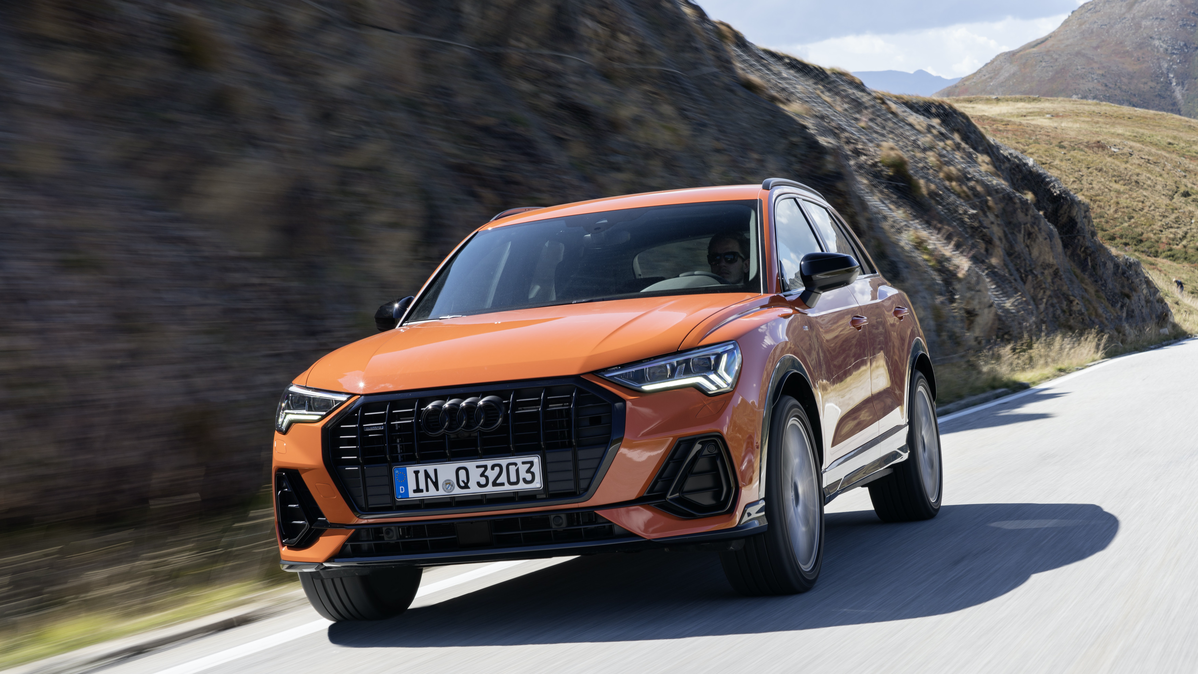Road test: Bigger is better for Audi’s upsized Q3 SUV
It turns out that size does matter in the highly competitive prestige compact SUV category.

Car makers are obsessed with the ‘bigger is better’ mantra. Park an original Mark 1 Mini alongside today’s BMW-fettled version, or an early Porsche 911 beside a contemporary Carrera, and you’ll see what we mean.
The tendency for new models to be incrementally larger than their predecessor is now so well established that most auto makers consider it a standard chapter of the play book to upsize whenever possible, in order to create room for a smaller new sibling to be added.
Onto that stage rolls the latest version of the Audi Q3, a premium compact SUV proudly proclaimed at a recent launch as “now almost a half-size bigger” than the original.
Since its 2012 launch, the Q3 has ridden the surging wave of SUV popularity to become one of Audi’s most important models; or at least, it had been until earlier this year when stock dried up faster than an Aussie dam in summer.
Audi’s model drought
The reason for the Big Dry, according to Audi, is that the European head office has been bogged down getting the entire Audi model range certified to a new fuel economy standard, impacting the usually smooth changeover from one model to the next.
Hence why, several months after it was originally due to launch, the all-new Audi Q3 has finally arrived – better, brighter and most importantly bigger in virtually every key dimension than its predecessor.
The new Q3 is longer (+96mm), wider (+18mm), and sits comfortably on both a longer wheelbase (+77mm) and wider tracks (+13mm). In fact, the only bit of the new Q3 that missed out on the ‘embiggening’ – to borrow a Simpsons-ism – is height, down by a paltry 5mm.
Inner space
Unless you’re Cadillac circa 1957 and can graft it into fins, all that extra metal is no good to anyone unless it provides more space. Audi says the design brief for the new Q3 called for it to be more practical and useable for a wider range of buyers.
Hence why when you hop inside, there is 70 litres of extra luggage space, more headroom both front and rear, and a wider cabin that makes the rear bench a plausible proposition for three abreast.
Two models and a single drivetrain are available at launch: the Q3 35 TFSI ($46,400 plus on-road costs), and the Q3 35 TFSI Launch Edition ($52,750) we’re testing, which arrives refreshingly free of added options.
Both are powered by a familiar 1.4-litre turbocharged four-cylinder petrol, driving the front wheels via a six-speed twin-clutch transmission. The smooth 110kW/250Nm four-cylinder is found elsewhere in Audi’s range including the A3 hatch, A4 sedan, and the Q3’s little brother, the Q2.
How does it compare?
That’s marginally more power and a good dollop of torque than BMW’s X1 sDrive18i (103kW/220Nm), at $44,500. Over at Mercedes-Benz, competition comes from the GLA180 which musters just 90kW/200Nm for an asking price of $43,900. Looking further afield, buyers might also consider the Lexus UX 200 Luxury ($44,450), or the Volvo XC40 T4 Momentum ($44,990).
For many buyers, the base Q3 might be all you need, coming handsomely equipped with 18-inch alloys, autonomous emergency braking, lane departure and lane change warning, rear cross-traffic assist, front and rear sensors, rear view camera, adaptive LED headlights, electric tailgate with gesture control, keyless entry and start, DAB+ digital radio, Apple CarPlay and Android Auto, and Audi Connect Plus Navigation and Infotainment services.
Both models feature Audi’s excellent MMI navigation plus system with 10.1-inch touchscreen and 10.25-inch virtual dash. The system is as up-to-the-minute as anything you’ll find elsewhere in Audi’s range, or in any of its rivals for that matter, with crisply rendered graphics and an impressive degree of individual customisation.
The $6350 step up to the Launch Edition adds 19-inch alloys, black exterior styling package, electrically folded and heated wing mirrors, privacy glass, 360-degree cameras, adaptive cruise control, an enhanced 10-speaker sound system, leather trim and heated electric front seats.
Firm but fun to drive
On the road, there’s an impressive degree of civility and refinement to the ride. It’s Germanically firm, to be sure, but stops short of jarring your teeth or rattling your ribcage over the lumpy stuff.
There’s ample grip and the Q3 reacts keenly to steering inputs, changing direction confidently and without excess body roll. Performance from the 1.4-litre turbo engine is hardly exhilarating, but it’s smooth and willing to visit its 6000rpm redline on command.
For performance fans feeling a bit underwhelmed by the launch line-up, fear not. More variants are in the pipeline including the Q3 Sportback in early 2020, sporty quattro variants of the regular Q3 and the Sportback in the second quarter of next year, and the fire-breathing RS Q3 and RS Q3 Sportback in the third quarter.
It’s a pipeline that will no doubt have Audi’s dealers opening the taps to celebrate the end of the Big Dry thanks to the La Nina-like return of the drought-busting Q3.









Hi Guest, join in the discussion on Road test: Bigger is better for Audi’s upsized Q3 SUV